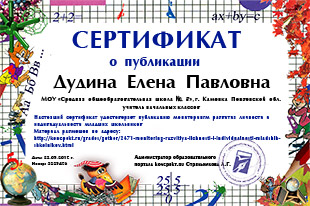Конспект урока английского языка для 10 класса по форме guided discovery "Conspiracy theories"
Main: To present and provide controlled practice of Past Simple and Past Perfect of the functional exponents for conspiracy theories.
Subsidiary: To develop ss’ skills of speaking in the context of conspiracy theories. To develop ss’ skills of reading for gist and specific information.
Personal aims:
- To give clearer instructions
- To check instructions
- To exploit pair/group work more.
- To allocate time properly.
- Not to echo ss’ answers.
Class profile
The level group consists of 14 people: 6 men and 8 women. All of them are Russian native speakers at the age of 40-59. They have totally different language-learning background. Some students have studied English for 10 years at school and university and they need to study more in order to speak English fluently. Five learners studied English at school many years ago and need to refresh their memories.
Assumptions
The Ss are aware of Past Simple and Past Perfect, the difference between main events in a story and background information in a story. They are aware of words connected with conspiracy theories.
Sources of materials
SpeakOut Intermediate Student’s Book Antonia Clare, Jj Wilson 2nd edition (2011) pp. 23-24.
SpeakOut Intermediate Workbook Antonia Clare, Jj Wilson 2nd edition (2011) pp. 11-12.
Ход урока
|
Stage |
Procedure |
Aims |
|
Lead in |
T puts pictures of dead famous people: Princess Diana, John Lennon, John F. Kennedy. T: What is in the pictures? Elicit: People who are not alive anymore. T: What is the same feature that join them? Discuss in pairs. You have 2 min. OCFB: what did you learn about your partners. |
To set the context of the lesson, to introduce the vocabulary in the context of showing interest in the conversation, to activate the background knowledge. To personalize the task, to generate interest in the topic. |
|
Text-based presentation Reading task |
T: Work individually. Look at the title and answer what is the text going to be about? Also, try to answer the questions: What do you think the conspiracy theories were about (the events in the photos)? Which story do you think involved a real conspiracy, according to official reports? Read the text on p. 23 (Appendix 1). Elicit ss answers. T: Read the text again. Try to answer the next questions: Who died in their bathroom? Who was shot? Who was arrested? Who was murdered? Who were the suspects? Who was photographed? Elicit what ss can remember. T: Work in pairs. Read the text again and try to answer how are these words and phrases related to the stories (Appendix 2). ICQs: Do you work individually? – No. Do you need to translate the words? – No. GIVE HO. GIVE them time to look through. Demonstrate the activity using the first word as an example, eliciting what ss can remember about shadows. In pairs, ss discuss what they can remember about the words and phrases. In feedback, nominate ss from each pair to give their answers. |
To practice reading for gist. To make sure ss understand the context in the TL is presented.
To practice reading for details.
To make sure ss understand the context in the target language (TL) is presented. |
|
Highlighting the TL Focus on MFP Clarifying the TL |
T: Work in pairs. Underline the phrases which are used to talk about conspiracy theories. Give cards. Make up one question with each word and ask your partner. Ss discuss the questions in pairs. In feedback, elicit ss’ opinions. T: Work individually. Look through the text again and find the examples, how it is used to talk about the main events in the story? And how it is used to talk about giving background information in a story? Ask: Which of the underlined verbs is in the past simple? Which of the underlined verbs is in the past perfect? Which tense describes the events that happened first? In feedback, elicit ss opinions. Read the rule with the class and elicit the correct alternative. for ss to underline. Check ss’ answers and provide further examples if necessary. T: Draw ss’ attention to some of the examples on the board and elicit/clarify the form (Appendix 3). Drill the natural chunks. Draw ss’ attention to the sentence stress and intonation. Drill. |
To get ss to notice TL in the context. To highlight the TL by the underlining activity. To provide confidence for the lower ss. Concept check meaning of target language.
To highlight form. To raise ss’ awareness of the form of TL and its usage. To make sure ss are aware of common mistakes and help to avoid them.
To model and provide controlled practice of pronunciation. To raise ss’ awareness. To improve ss’ pronunciation of TL and get them to sound natural. |
|
Controlled practice |
T: Work individually. Circle the correct opinion to complete the sentences on p. 11 in your workbooks (Appendix 4). You have 2 min. Do you work in pairs? – No. Do you write the words from the box? – No, we need to circle the correct opinion to complete the sentences. Exchange your workbooks with your partner and check. Then, complete the conversations with the correct form of the verbs in brackets on p. 11 in your workbooks (Appendix 5). You have 3 min. ICQs: Do you work in pairs? – No. Do you circle the correct opinion to complete the sentences? – No, complete the conversations with the correct form of the verbs. Exchange your workbooks with your partner and check. OCFB: counting the points for each sentence. OCFB: + asking: What form we use in the past simple? Elicit: verb 2. What form we use in the past perfect? Elicit: had + verb 2. Which tense describes the events that happened first? Elicit: Past Simple. T: Work in pairs. Each pair takes cards. The more questions you make with the given verbs in Past Simple and Past Perfect, the more points you get. OCFB: counting the points. Hot seat: - Work in teams. - Two people from each team sit back to the board. - T writes collocations on the board. - The teams explain to the people on the chairs the word on the board. - Change players. |
To provide ss with controlledoral/written accuracy practice. To focus on accuracy and provide ss with an opportunity to use TL. To provide an opportunity for peer help/correction. To consolidate understanding of the rule of using TL. |
|
Flexi stage |
T: Work in pairs of 4. On p. 24 match the headlines with the explanations (Appendix 6). Choose one story and describe it with your partners which have been recently in the news using the vocabulary. Demonstrate the activity by describing some news stories you have read/heard recently using the vocabulary. Monitor and check their use of narrative tenses, noting down any common errors for later feedback. In feedback, nominate a s from each group to summarise their stories for the class. ICQs: Do you work in pairs of 3? - No, of 4. Do you describe a story or picture? – A story. Monitor |
To provide ss with controlledoral/written accuracy practice. To focus on accuracy and provide ss with an opportunity to use TL. To provide an opportunity for peer help/correction. To consolidate understanding of the rule of using TL. |
|
Semi-controlled. Practice |
T: Work in groups. Grass skirt activity. Ss should choose the correct form of Past Simple and Past Perfect Work in pairs and show each answer to teacher. Ss get points. GIVE HO. OCFB in open pairs. |
To provide ss with less controlled written practice of TL. To test ss’ ability to use TL To notice common mistakes and immediately correct them To practice TL in its meaningful context of past events and background to past events. |
|
Freer practice |
Role-play T nominates ss: Apples and Bananas. Work in pairs. > Chesting > Follow the instructions on the HO. If time, swap your roles. OCFB |
To provide freer practice of TL and make it meaningful to ss. To develop ss’ speaking skills using new language. To make TL memorable / to internalise TL through engaging speaking activities. |
|
Feedback on content and accuracy |
T: Today you learn about conspiracy theories and why they can be or not. Remember the famous names, words and phrases that were used during the lesson. Also, I want you to look at the cards and correct the mistakes in them. |
To praise ss and increase intrinsic motivation. To improve accuracy. To consolidate understanding of the rules of TL. |



